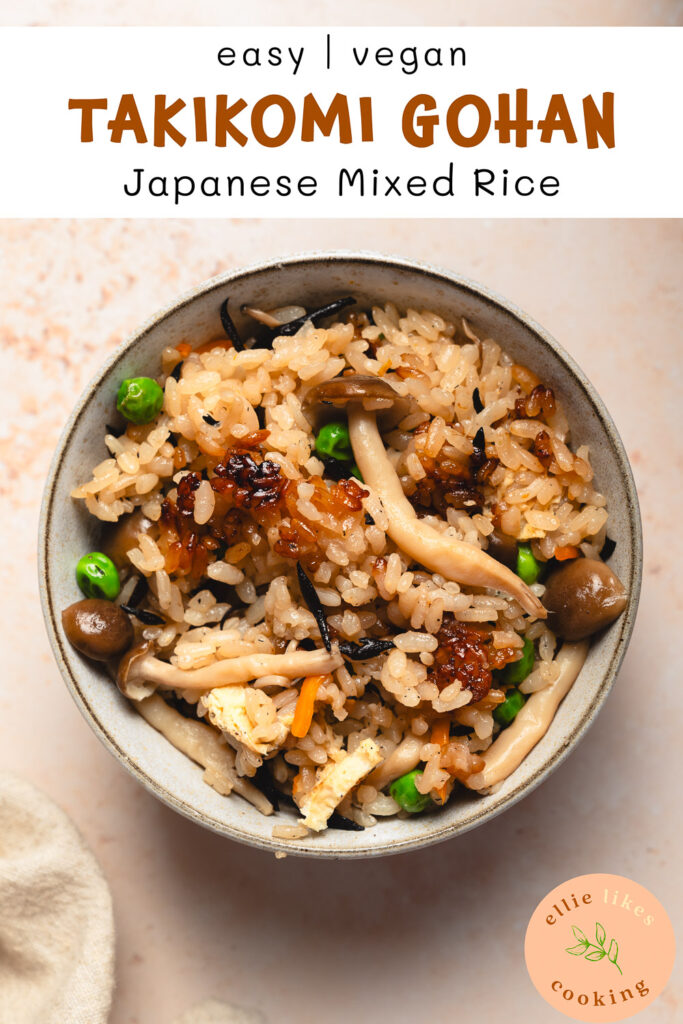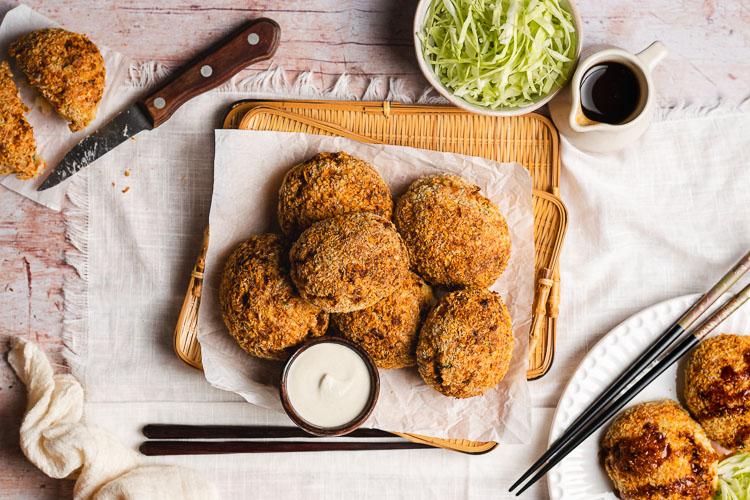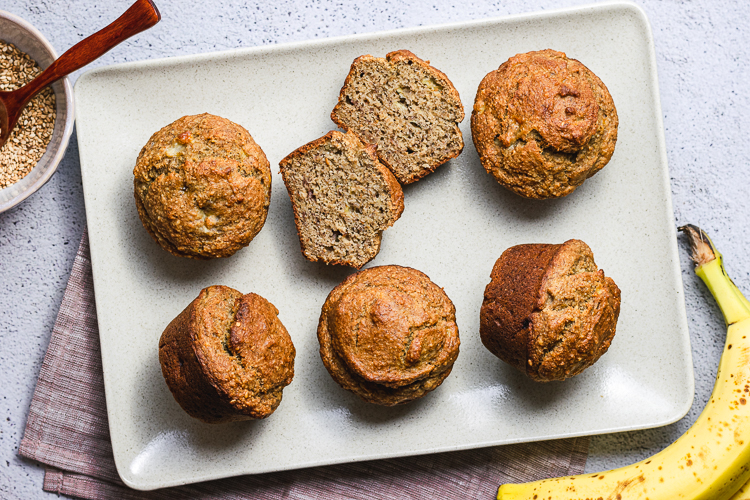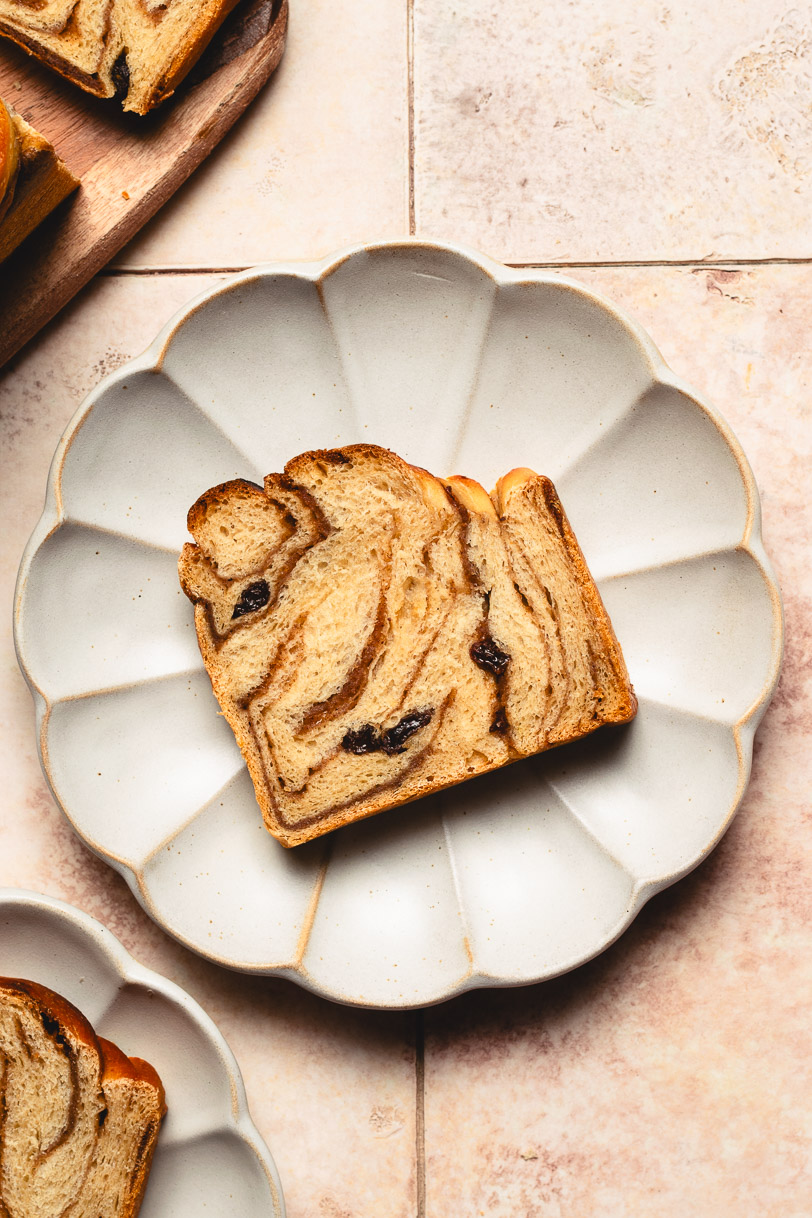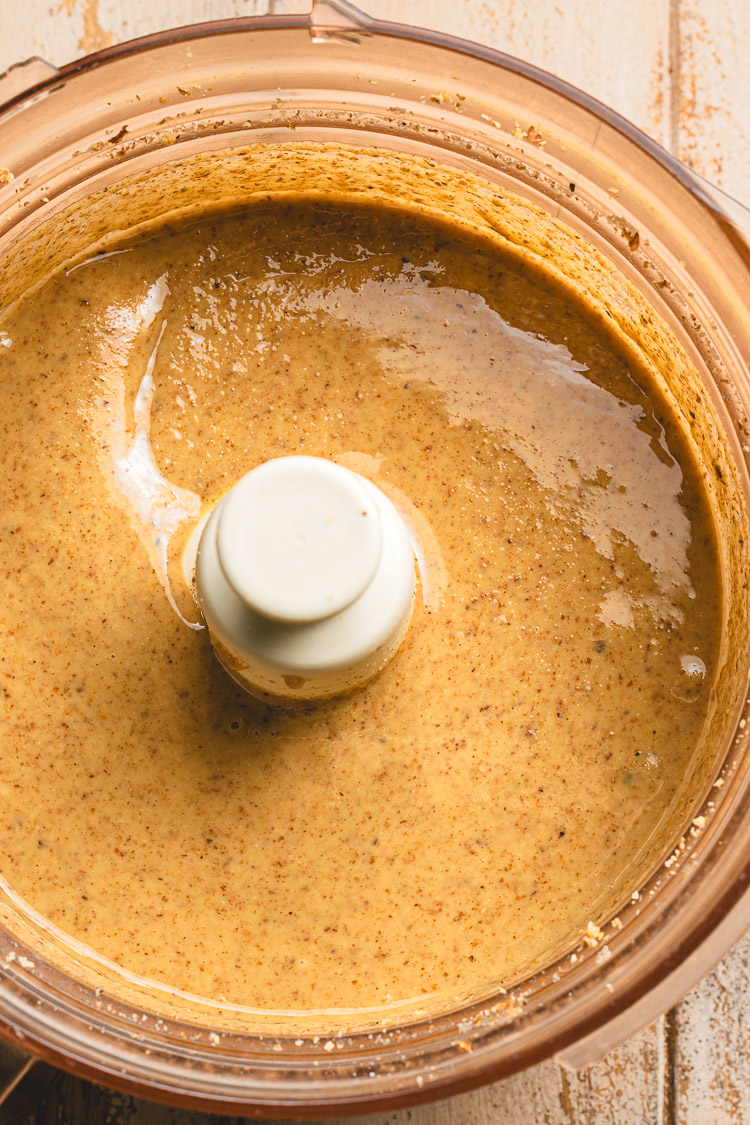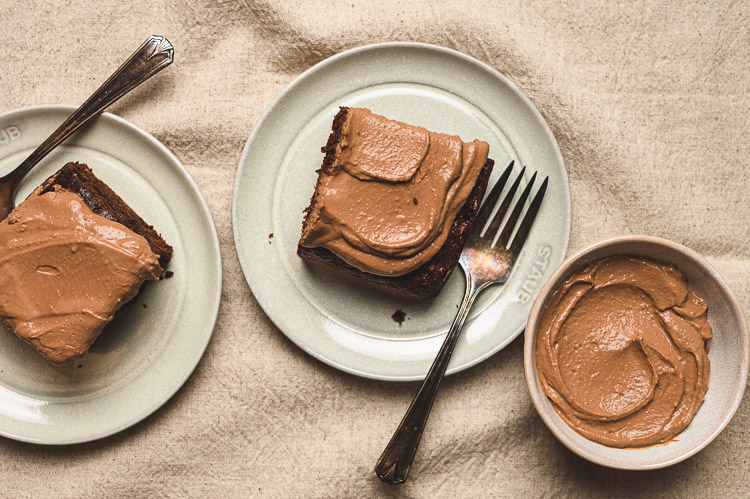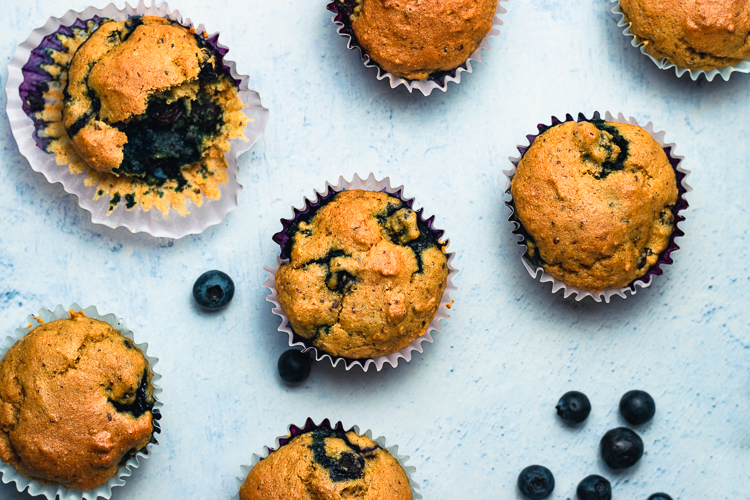Takikomi Gohan (Japanese Mixed Rice ) 炊き込みご飯
Learn how to make takikomi gohan, a Japanese mixed rice full of umami and colorful veggies. An easy and comforting rice cooker dish!
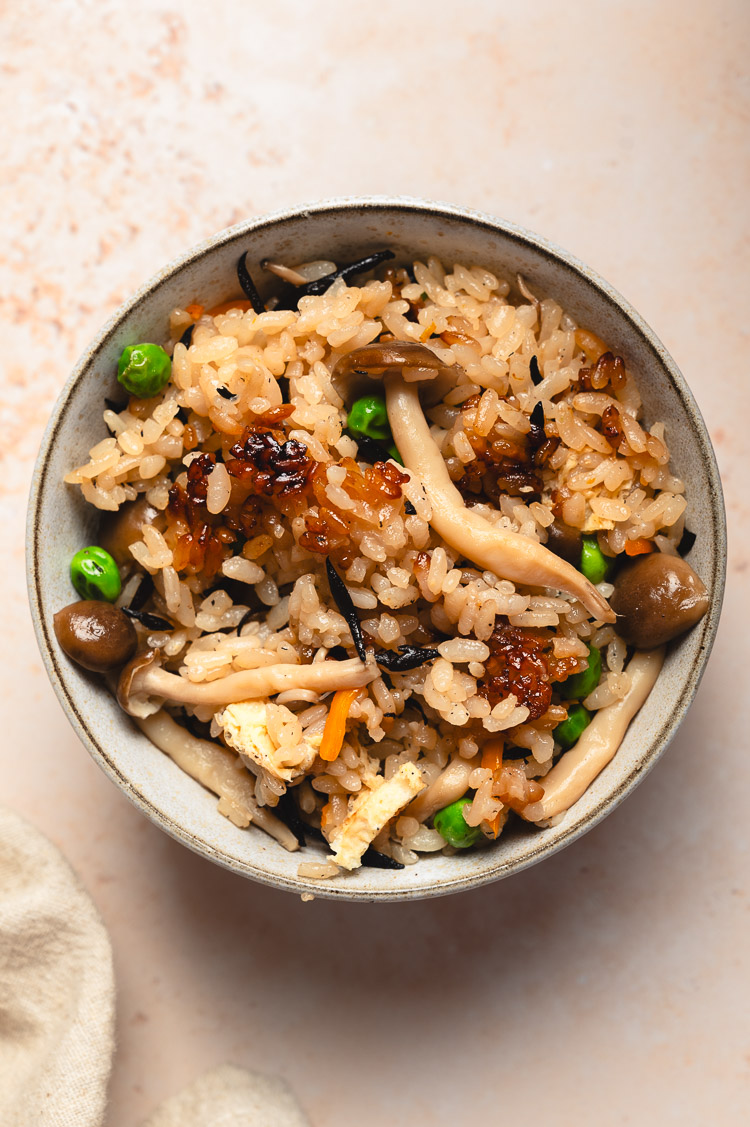
What is Takikomi Gohan?
Takikomi gohan is a Japanese rice dish in which short grain rice is cooked with vegetables, seafood, and/or meat and seasoned with dashi and soy sauce. Cooking the vegetables with the rice makes the rice more flavorful (and also makes cooking really easy). You can switch up the ingredients depending on what’s in season – for example, in autumn and winter Japanese sweet potato rice is very popular. Takikomi gohan is a very versatile, adaptable, and delicious rice dish that’s also super easy to make!
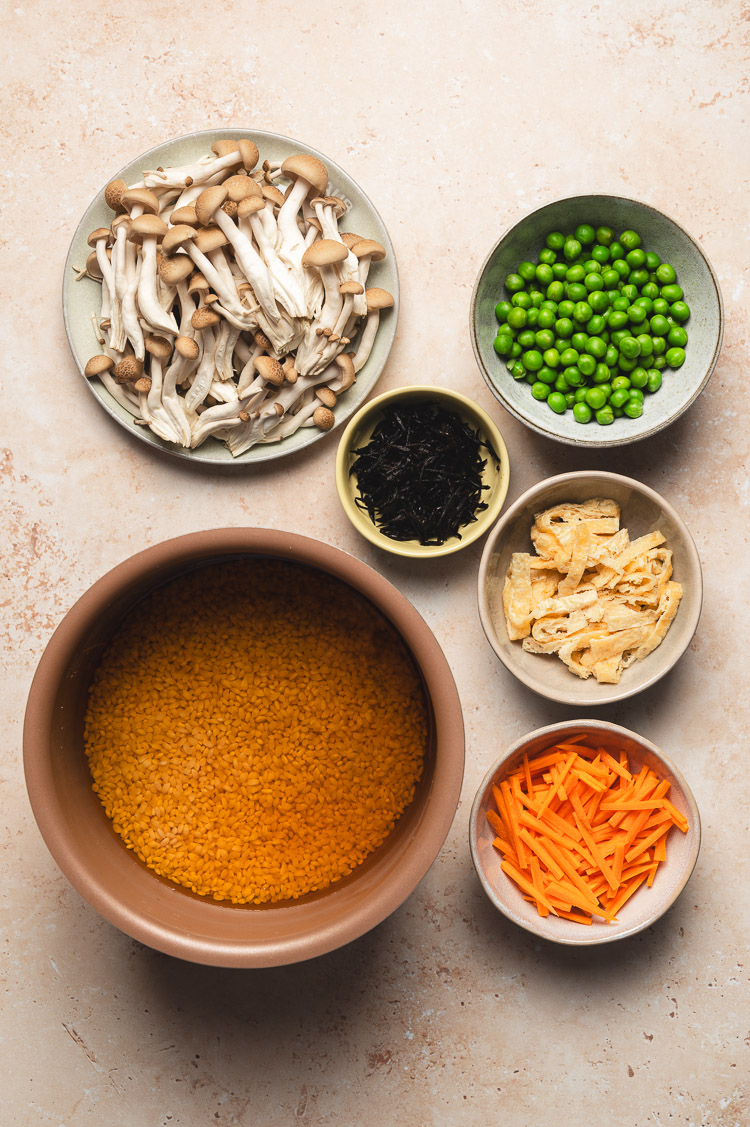
Key Ingredients
- Japanese Short Grain Rice ⟶ Do not use long grain rice for this! Please use short grain Japanese rice for the best tasting takikomi gohan (medium grain Japanese rice is OK too).
- Veggies + Protein ⟶ You can switch up the veggies if you’d like. I usually use hijiki, carrots, konnyaku, green peas, mushrooms, and aburaage for protein. Try to use various colors!
- Other common ingredients are bamboo shoots, gobo (burdock root), lotus root, sweet potato, edamame, snow peas, and other proteins like chicken or fish.
- Soy Sauce, Mirin, and Sake ⟶ These are the seasonings that make the rice savory and delicious. You can replace the sake with more mirin if you prefer a slightly sweeter flavor.
- Dashi ⟶ Use kombu dashi to keep it vegan/plant-based. You can make your own by soaking kombu in water, or use dashi granules. If you use dried shiitake in the rice, save the soaking liquid to use for part of the dashi.
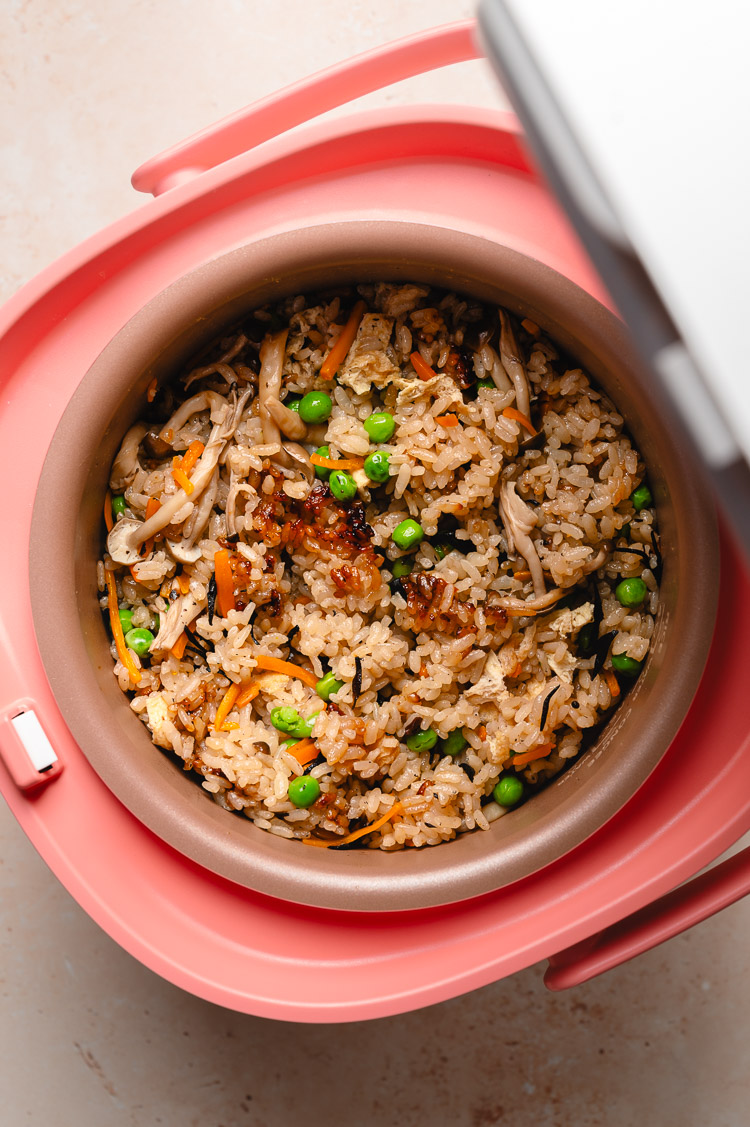
Tips for Success
Wash rice ⟶ Always wash rice before cooking! Rinsing the rice first removes excess starch on the outside of the rice grains, so you don’t end up with rice that is too sticky or mushy. Rinse at least 3-4 times, and work quickly! The rice will start to absorb liquid as soon as the water hits it, so don’t let it sit untouched in the water. Move your hand in a circular motion a few times to rinse the rice, then drain the water and repeat.
Soak rice ⟶ Soaking rice gives the grains time to hydrate, making them easier to cook so you get soft, fluffy rice. It also makes the rice more able to absorb the seasonings. Soak the rice in plain water, not with the seasonings. The seasonings will actually make it harder for the rice to properly cook.
Boil konnyaku and aburaage ⟶ Boiling konnyaku removes some of the smell, and boiling aburaage removes some of the oil.
Mix veggies into rice after cooking ⟶ Add all the veggies on top of the rice (add harder-to-cook veggies first like root vegetables) and don’t stir! They will steam while the rice cooks. If you mix them into the uncooked rice, the rice won’t cook properly and the veggies will overcook. Mix everything together after the rice has cooked.
Add peas after cooking ⟶ To keep the vibrant green color of the peas, stir them into the rice after cooking. Otherwise they will get mushy and loose their color if cooked with the rice.
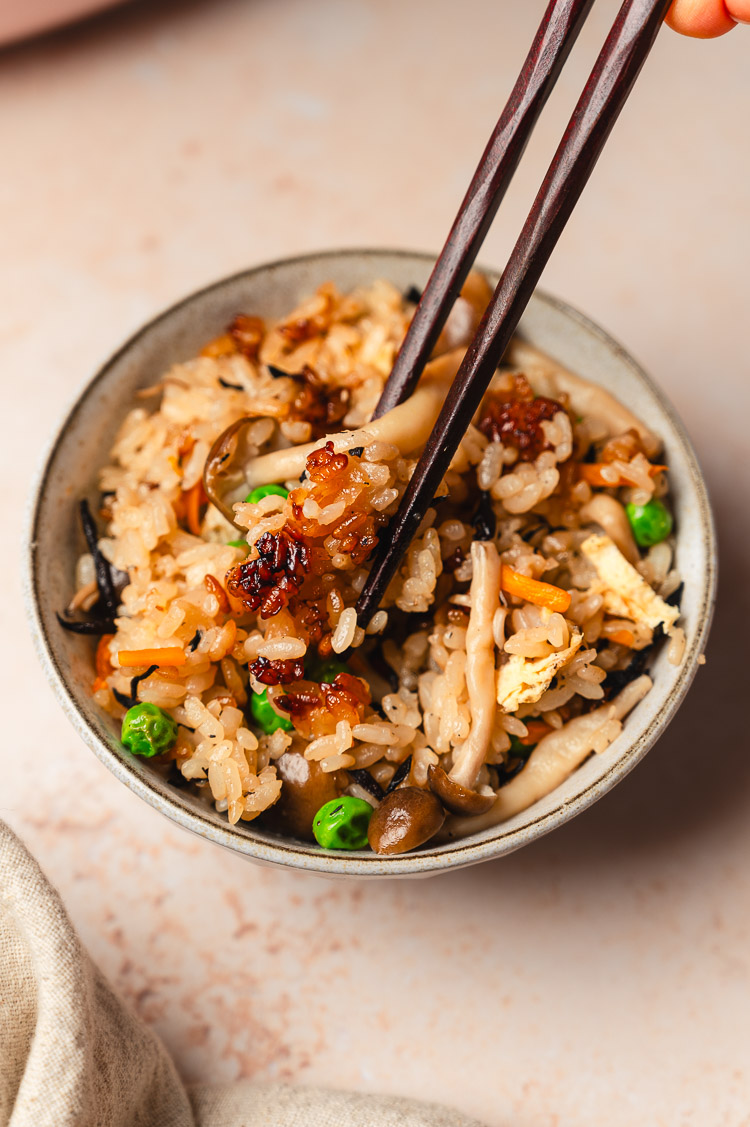
Takikomi Gohan FAQ
How do I serve takikomi gohan?
Takikomi gohan pairs well with a high protein main dish like sweet and spicy tofu, spicy mochi kinchaku stew, miso braised tofu, sweet and sour meatballs, tofu cabbage rolls, or tofu karaage. You can also serve it with miso soup and small side salad.
How do I store takikomi gohan?
Takikomi gohan is best served right after cooking. Leftovers can be frozen in individual portions for easy reheating. Refrigerating isn’t recommended since the rice will dry out and get hard in the fridge (though I admit I do refrigerate mine often – reheat with a damp towel over it).
Is takikomi gohan gluten-free?
You can easily make this gluten-free by using tamari or another gluten-free soy sauce.
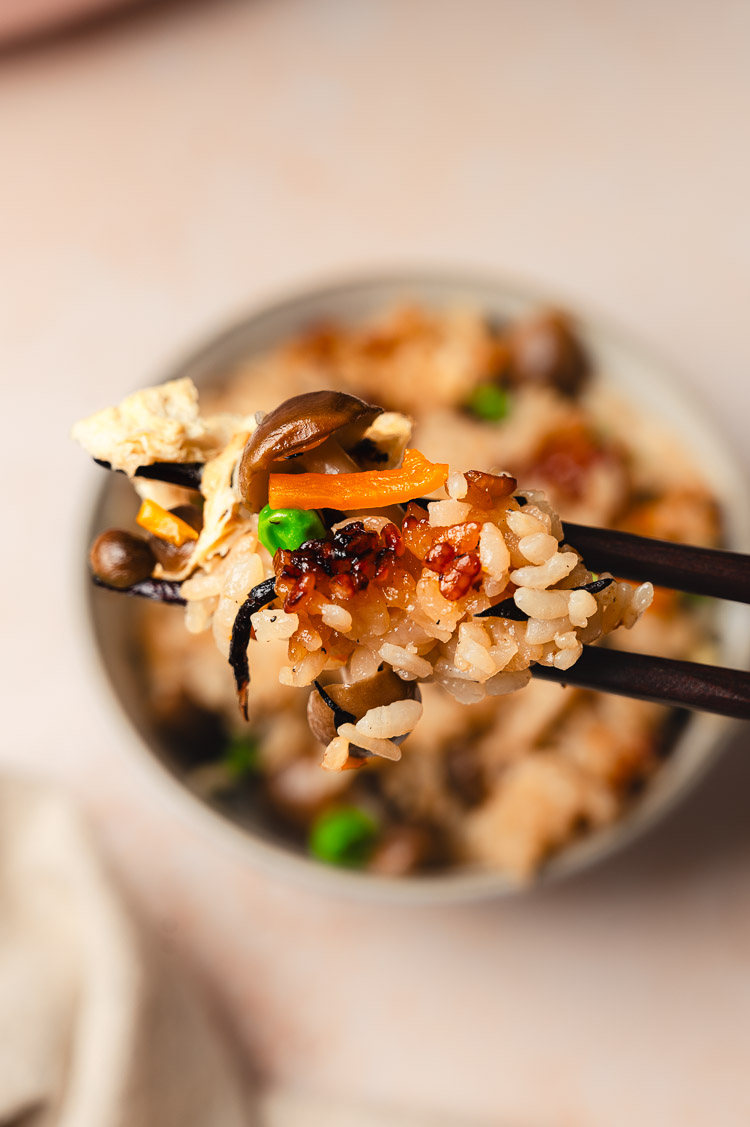
More Japanese Side Dishes
- Sesame Mizuna Salad
- Red Lentil and Chive Pancakes (Chijimi)
- Tofu Mochi Isobeyaki
- Vegan “Tuna” Mayo Onigiri
- White Bean Korokke
- Sesame Miso Roasted Potatoes
- Somen Salad
If you make this takikomi gohan, don’t forget to leave a comment/rating down below and tag me in your photos on instagram @ellielikes.cooking. I love seeing all of your tasty recreations!
Takikomi Gohan (Japanese Mixed Rice) 炊き込みご飯
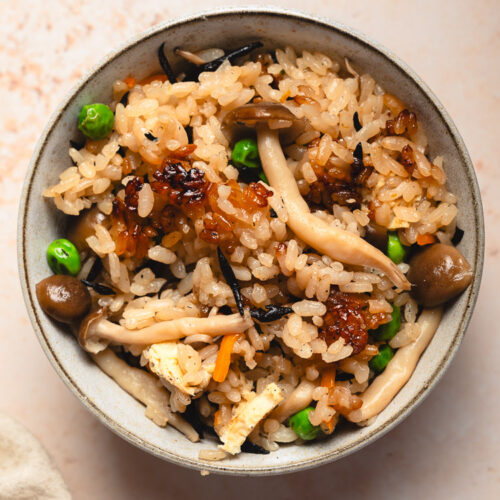
Ingredients
- 2 rice cooker cups Japanese short grain rice (1½ US cups)
- 1 tbsp
dried hijiki* - ¼ package konnyaku
- 1 aburaage (Japanese fried tofu pouch)
- 1 small carrot
- 100 grams shimeji mushrooms**1
- 2 tbsp soy sauce or tamari for gluten-free
- 1 tbsp mirin
- 1 tbsp sake
- kombu dashi**2 as needed
- ½ cup frozen peas thawed
Instructions
- Wash rice in a large bowl. Add water and move your hand in a circular motion a few times to wash the rice, drain water, and wash again. Repeat 3-4 times until the water isn't so murky anymore.Tip: Work quickly since the rice will start to absorb the water as it sits. Don't leave the rice in water for too long.
- Soak the rice in water for 30 minutes while you prepare the veggies.Tip: Soaking rice gives the grains time to absorb some of the water, resulting in soft, fluffy rice.
- Rehydrate hijiki in a small bowl of water for 5-10 minutes. Pour into a sieve to drain the water and gently press on the hijiki to remove excess water.
- Bring a pot of water to a boil and boil the konnyaku for 1 minute. Transfer to a plate and boil the aburaage in the same pot of water for 1 minute. Transfer to a plate to cool. Once cooled, gently squeeze excess water out of the aburaage. Slice konnyaku and aburaage into strips.
- Peel and cut carrot into 2-inch matchsticks.
- Thaw frozen peas in a colander at room temperature.
- Drain rice and add to the rice cooker pot. Add soy sauce, mirin, and sake. Pour in enough dashi to reach the 2-cup line on your rice cooker.
- Now scatter the other ingredients on top (except peas): carrots, konnyaku, aburaage, hijiki, and mushrooms. Don't mix them into the rice.
- Cook rice. Use the mixed rice setting if your rice cooker has one, otherwise cook as normal but leave in the rice cooker for an extra 5 minutes.
- Add thawed peas and close the rice cooker again for a minute to steam the peas.
- Mix the rice with a rice paddle to distribute the veggies. Slice and fold the rice, rather than stir, to prevent breaking the rice grains and making it mushy.
- Takikomi gohan is best served right after cooking. Leftovers can be frozen and reheated. Refrigerating isn't recommended since the rice will get very hard and dry.
Notes

*Disclosure: This page may contain affiliate links. As an Amazon Associate I earn from qualifying purchases, but the price remains the same to you. Thank you for supporting Ellie Likes Cooking!
Save for later!
